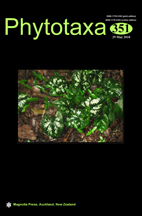Abstract
Metal hyperaccumulator plants represent a unique biological resource for scientific research and practical applications. Though essential, however, an adequate knowledge of the systematics of these plants is often missing. This is the case of Odontarrhena, a large but taxonomically critical group of nickel hyperaccumulators from Eurasia. We present a study on this genus in Albania, to fill a gap in our knowledge of this group from a major centre of diversity of metallicolous flora, and to contribute updated information to the Global Hyperaccumulator Database. Morphological and karyological analyses of material from field collections across all major serpentine outcrops in the country, in different years and seasons, allowed to delimit seven taxa: O. albiflora, O. chalcidica, O. moravensis, O. sibirica, O. decipiens, O. smolikana subsp. glabra and O. rigida. The three latter taxa have been long neglected and were resurrected in view of their clear distinctness, while commonly accepted taxa such as O. bertolonii subsp. scutarina and O. markgrafii were reduced to synonymy of O. chalcidica due to the lack of consistent differentiation. Polyploidy was prevalent, while diploid complements were typical of the two vicariant endemics O. rigida and O. moravensis. Types are indicated or newly designated for each entity, and nomenclatural issues are addressed based on in-depth studies of literature and herbarium material. Revised descriptions, phenology, habitat and distribution data are given for each taxon, as well as original iconographies and chromosome counts. A revised identification key is provided. Shoot nickel concentrations were determined to assess accumulation levels of taxa and populations in natural conditions and their potential for phytoextraction of this metal from the soil. With ca. 23000 and 17000 µg of Ni g-1 of shoot dry weight, respectively, the tetraploids O. chalcidica and O. decipiens were the most promising candidates, especially the latter for its robust habit.

